Adaptability, unique experiences, and technology can help downtowns meet post-pandemic lifestyles
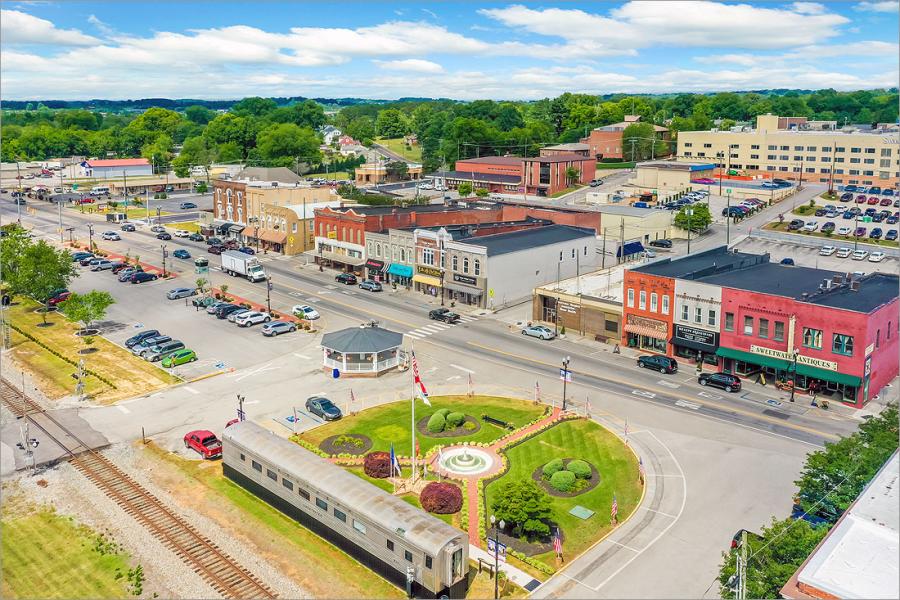
By KATE COIL
TML Communications Specialist
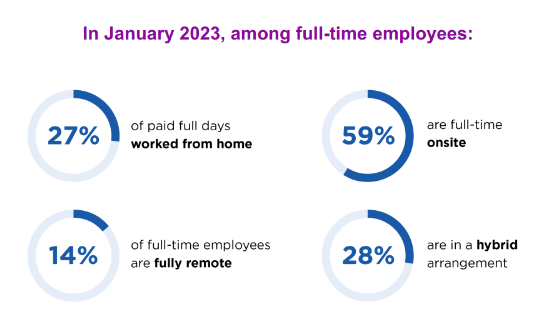
The face of retail in downtown spaces is transition yet again as technology and post-pandemic lifestyles continue to change how citizens want to live, work, and play in their communities.
Lena Geraghty, director of Urban Innovation and Sustainability in the Center for Municipal Practice at the National League of Cities, moderated a panel including Greeneville City Administrator Todd Smith, Sweetwater City Recorder Jessica Morgan, and UT-MTAS Management Consultant Angie Carrier at the TML 83rd Annual Conference in Nashville to discuss how to best adapt to the changes in downtown retail.
On a macro level, Geraghty said NLC research has found that changes in business districts have been profound due to the decline of in-office work in certain areas and recovery has been uneven for many communities. Those who no longer have a large office population they can rely on to patronize downtown businesses.
As work-from-home or hybrid work practices become more the norm in the office world, many businesses have also pulled back from brick-and-mortar stores due to the high cost of rent and better bottom lines provided by online-only operations. Likewise, downtowns who are adjacent to or themselves are well-balanced, livable, and walkable neighborhoods encourage a more positive business climate.
Geraghty said one transition researchers are seeing shows customers may choose to buy online but pick up their orders or process returns at a physical location. Communities that can provide digital support to local businesses, create opportunities for in-person retail experiences, and build partnerships between neighborhood and citizen-based organizations and the retail community may be better positioned for downtown economic development.
STAYING CLOSER TO HOME
While retail usually comes in ebbs and flows in Greeneville, Smith said one blessing from the pandemic was getting residents to see what their own community had to offer.
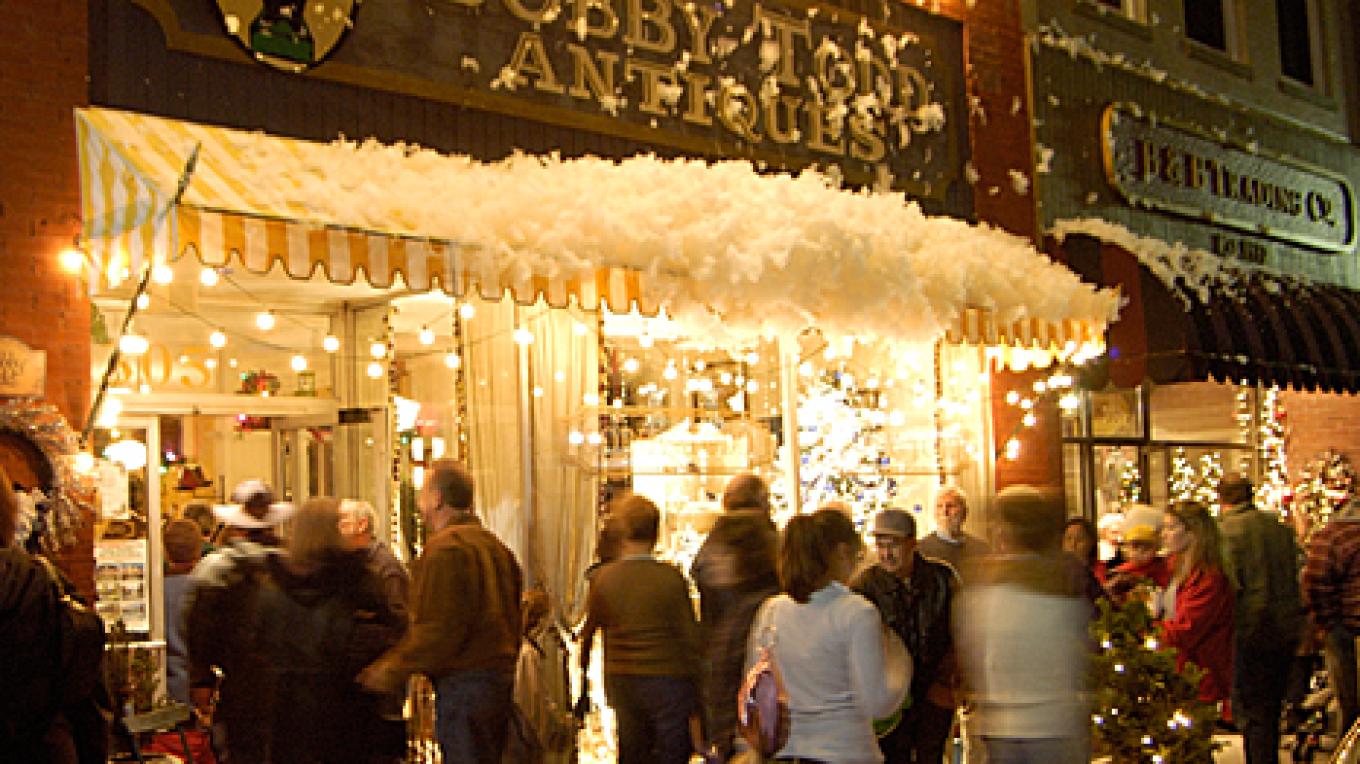
“Our trend, as a small rural city, was typically on the weekends our folks would go to Knoxville, Asheville, Johnson City, and make a day of going out to eat and going shopping,” Smith said. “When Covid happened, our residents, like most residents stayed home. They then began to see what was in the community. In some odd way, Covid actually helped our retail economy.”
Retail has always been an important component of downtown revitalization. About 15 years ago, Morgan said the two major anchor businesses of Sweetwater’s downtown were a restaurant and a women’s clothing shop that was largely out of the price range of most of the city’s residents. To build local support, Morgan said Sweetwater leveraged the desire for people to stay closer to home.
“Some of the things we have done are events and festivals,” Morgan said. “We really tried to re-envision our festivals and events to not just have events for the sake of having events but to have events that were focused on helping our retailers. That could be sales the day of the event or returning customers after the event. You have to make sure that these events are helping downtown business and not hurt downtown business. You have to find ways to make sure people go into the businesses instead of just parking out front and staying in the festival area.”
Morgan said some of the events they have offered include scavenger hunts in local businesses, a Small Business Saturday event where residents give out “Main Street Bucks,” and a “Shark Tank” competition where local high school students pitch business ideas to downtown business owners. She said the Shark Tank competition has even inspired some new businesses downtown.
UNIQUE EXPERIENCES
Another way Sweetwater had worked prior to the pandemic to educate residents and send positive messaging to entrepreneurs as part of an effort to make sales tax revenue their primary revenue stream rather than property tax. Since the pandemic, Morgan said the unique experience these retailers provided has kept businesses afloat.
“The number one word that gets used about Sweetwater is ‘charming,” Morgan said. “Our business owners are excited you’re in their store. They’re going to give you an experience not just a place to spend your money. I think that will be one of the keys moving forward is to make retail an experience. Why else are they going to come if not for the experience?”
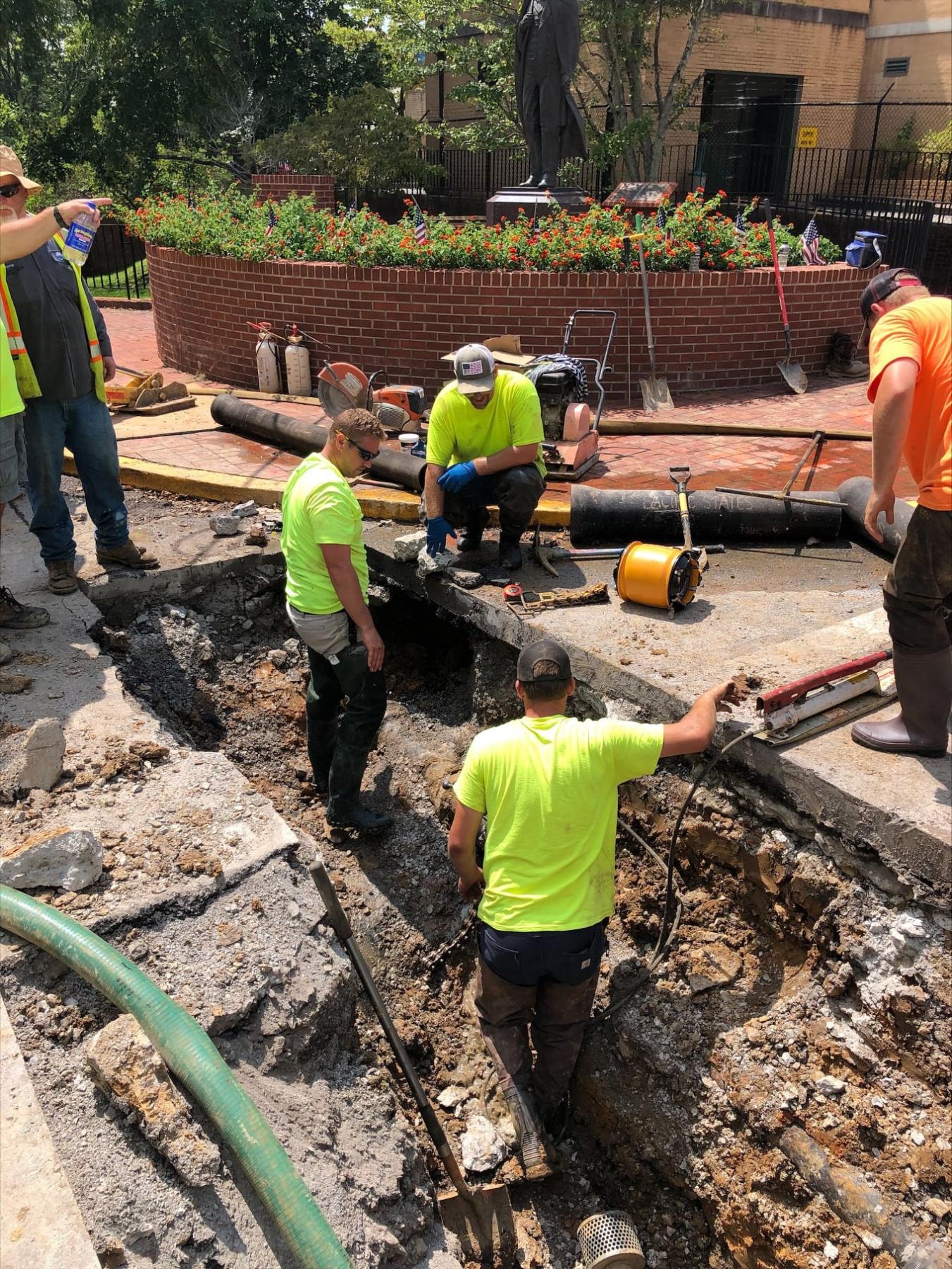
Smith said he has also seen a trend of visitors and locals both wanting to go and have unique experiences.
“In a small town like Greeneville, we don’t have a major sports team, a large museum, or a big natural attraction,” Smith said. “We made a decision about 10 years ago that our experience needs to be aligned with our public infrastructure and the look of our downtown. We replaced all of our utilities underground, developed streetscapes and landscapes, created a decorative street top, and added some bollards we can move in and out for festivals.”
Smith said the decorative street top they incorporated into the Depot Street Revitalization both creates a “wow” factor and allows the city to block off the street to traffic easily when there is an event then reopen it afterwards. Smith said “below ground” or utility investments may not be as visible as beautification on the street level, but without those investments there is no business or residential downtown at all.
Early in the design process, Smith said a lot of the “blue sky” dreaming came from around 10 public feedback sessions inviting members of the community, Main Street business owners, and the local chamber of commerce. The result of the city’s investment in downtown has encouraged a major downtown property owner to open up more residential spaces in downtown, which can also further increase opportunities for downtown business.
“At the end of the day, we can go back to the community and say this is your design,” Smith said. “The one key factor we learned is that we shouldn’t inspect the private sector to make an investment in our town unless we are ready to make an investment in our town. We want to be the first out there to make an investment.”
Beautification can also be a low-hanging fruit project to help create a one-of-a-kind downtown space. Morgan said Sweetwater has employed a full-time landscaper focused on the downtown for years, and the city often gets asked where they get their flowers and plants.
“Landscaping by itself is a huge component,” she said. “It can make your town more welcoming and inviting, and people want to stay there longer. Even if you don’t really have a green space downtown, build some planters. Put some planters downtown and some string lights. Make it feel like it’s a green space.”
Cleaning up less than attractive areas of downtown call also be a boost.
“Before we created our open-air market, it was an abandoned used car lot that was leased from the railroad,” she said. “Before we turned it over, there was an RV that had been sitting there for about six months that someone had spray painted ‘F--- the police on.’ Quite frankly, I will take that $9,000 lease from the railroad to keep it from being that parking lot again. That was the entrance to our downtown. That was what people saw first when they came in. That was the messaging they were getting. Whatever investment we made in that was worth it.”
Carrier said one struggle for many communities is that they don’t have a specific “downtown” area or their downtown area is not convenient to access. Many of these communities are seeking to recreate the downtown experience.
“A downtown is more the heart of the community,” she said. “You always have your big box retailers on the outskirts of the community, but you need to have that heart. You need that center where you can have special events, where people can walk around and see each other, and have your food trucks show up. If you don’t have a downtown, you can create a town center type environment; you just have to plan for it. A lot of communities are putting masterplans together to see how they want it to look like aesthetically. It can be done, and the city itself can do that with hotel/motel dollars. You need to think outside the box.”
CHANGING WITH THE TIMES
Adaption has been key for successful businesses and communities post-pandemic. With more people wanting to work and shop closer to where they live, municipalities may benefit from looking at ordinances and rules on the books that may actually be harmful to allowing people to live downtown or that are no longer in sync with the way business is done in the Digital Age.
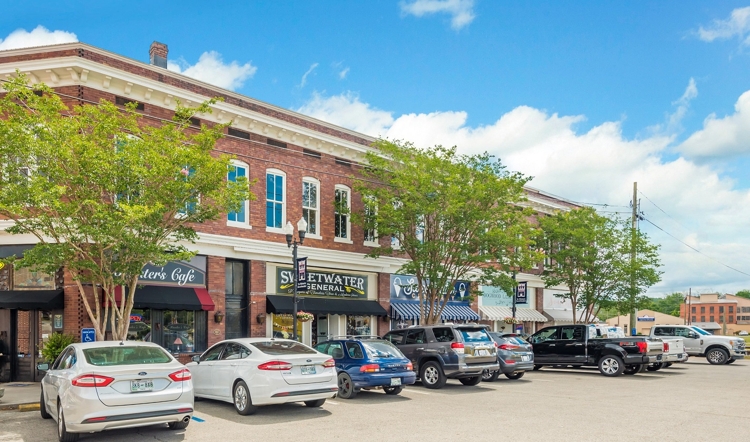
Parking has been a concern in Greeneville, Smith said
“People want to park downtown right in front of the front door of the business they want to visit, but they’ll park at Walmart all the way in the back and walk,” he said. “One of our solutions was to create a Parking Authority that patrols our lots and enforces limits. We had a two-hour parking limit downtown, which becomes a source for a lot of complaints. We have a lot of small businesses that offer quick in-and-out services. We created 15-minute spaces in front of those businesses where someone may just want to go in, pick up a coffee, and go.”
Smith said they have also found it valuable to work with developers from the start, bringing in together local utility, telecommunications, city codes and permitting officials, and others to both help anticipate roadblocks and provide advice.
Morgan said when Sweetwater’s Main Street Program got started, they found a local ordinance was keeping many people who wanted to live downtown from doing so.
“We had a law on the books that said you had to own a parking spot to be able to live downtown,” she said. “Obviously, having residents is a key to downtown nightlife, to having people on the sidewalks after five o’clock. We repealed that. We also created an open-air market space, which did create some push-back from our brick-and-mortar stores. They said food trucks don’t have to pay as much in taxes as they do, so we suggested they started a food truck too. We found it is important to give more flexible opportunities where small businesses, especially since the pandemic, can find secondary revenue streams.”
An example of this flexibility is how Sweetwater worked with a local coffeeshop to prevent them from leaving downtown.
“She wanted to move out on the highway because there was a building out there that had a drive-thru,” she said. “It wasn’t that zoning didn’t allow that downtown; there just wasn’t space for it. We joined with our local business owners, closed down a local alley, and took a $1,000 grant from the state to cover her app costs. We cleaned up the alley, repainted it, and opened it up as a drive-thru for all those businesses. The approach shouldn’t be ‘oh, we don’t allow that;’ It should be O.K., there’s a problem so how do we fix it?”
USING TECHNOLOGY
The app being used by the coffeeshop for its local drive-thru also provided valuable data for all of downtown Sweetwater. Morgan said the app showed there were 400 users the first time it was opened. As a result, Sweetwater began using Placer AI data to see how many people were downtown on any given day and if they were local or not.
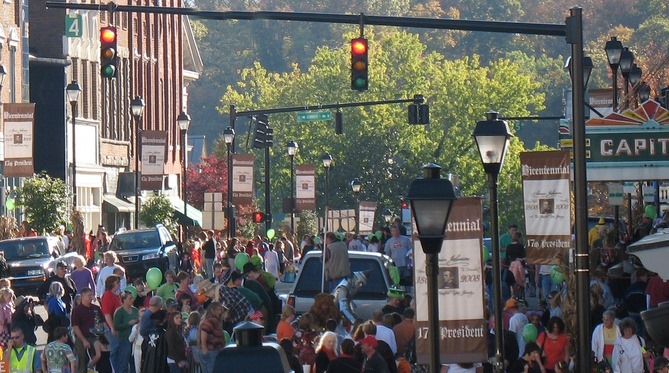
Carrier said the Placer AI data and similar tools can help smaller communities gather demographic information about their downtowns while still protecting the privacy of those who work and shop there.
“The Tennessee Retail Alliance did a few demos and decided to go with the same Placer AI Sweetwater has,” she said. “They have tools where you can pull dates, and see where people came from into your community. I’m really excited about it, because it is something you can look at to get demographics and find specific areas you want to look at. It’s really important to have accurate data and for communities to be informed about their specific properties, who is there, and where their citizens are going to get what they need.”
Being able to come to retailers with specific details about demographics can help with recruitment.
“You need that data as a community to actually properly recruit businesses that are a good fit for you,” Carrier said. “If you don’t meet certain demographics for a company, there is no point in even going after them. They actually get annoyed by that, and you’ve hurt that relationship in the future. It does matter that you get in touch with them and show that your community wants them. Retail is not like it used to be. Walmart used to come in and other businesses followed. Now, that is not the case. Everyone does their own work, but they may miss something. If you can prove that you’re a good fit, they will come to you.”
Another thing Carrier said she has noticed is those businesses that have a savvy online presence are better positioned for the way people want to shop post-pandemic.
“Those retailers had an online presence prior to COVID were the ones that really succeeded,” she said. “Now, people have gotten used to ordering their groceries online and getting them delivered to their houses because it saves them time. People’s buying power and what they want have changed as well. Those companies that can adapt and do that thrive. Your Mom-and-Pop stores that started putting their merchandise on Instagram so people would order them online and get them shipped.”

